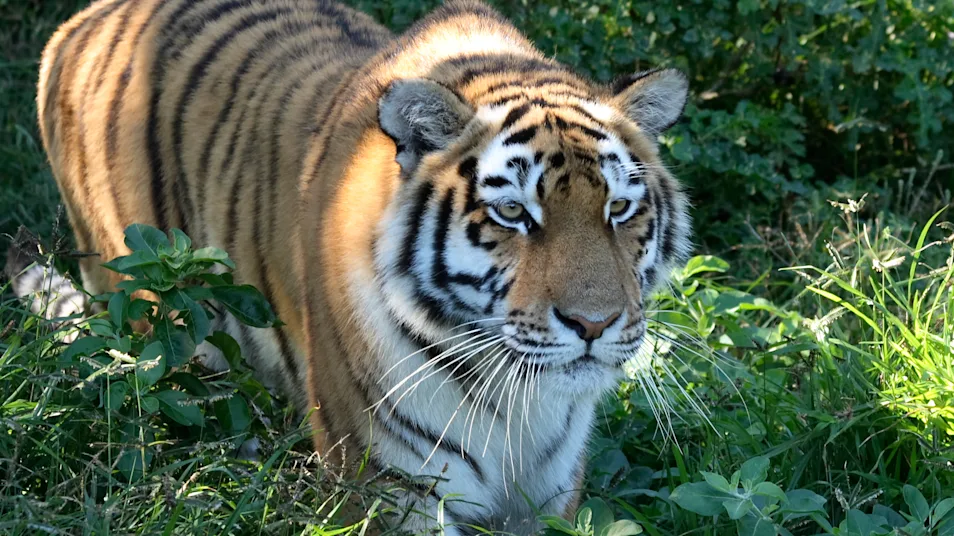Bengal Tiger Facts | India Wildlife Guide
Native to much of eastern and southern Asia, Bengal tigers can reach up to 13 feet in length and weigh up to 660 pounds. They are very adaptable, ranging from the Siberian taiga to open grasslands or tropical mangrove swamps. They are highly territorial and normally solitary animals, and they usually require large adjoining areas of land that support their prey demands. This, coupled with the fact that tigers are endemic to some of the most densely populated regions on the planet, has resulted in significant human-wildlife conflict. The tiger’s historical range has been radically diminished, and, despite formal protections on all surviving species, poaching, habitat loss and inbreeding continue to threaten their survival.
Tigers have rusty, reddish to brown coats, a whitish medial and ventral area, and stripes in hues of brown, hay or black. The form and density of stripes are different between subspecies, but the majority of tigers have more than 100 stripes. Each tiger has a distinctive pattern of stripes that can potentially be used to identify individuals, which is similar to how fingerprints are used to identify people. This is not, however, a favored method of identification, as it is difficult to record the stripe pattern of a wild tiger. It is thought that the stripes of a tiger act as a method of camouflage, keeping them hidden from prey. The stripe pattern extends onto a tiger’s skin, and if shaved, its unique camouflage pattern would be retained. Male tigers have wider forepaw pads than females, which is often noted by biologists in determining the gender of tigers when observing their tracks.
As with other cats, tigers are solitary hunters, ambushing their prey and overpowering them, using their formidable strength and weight to knock larger animals off balance. Despite their sizeable mass, tigers can reach speeds of about 35 to 40 miles per hour.
India holds the largest population in the world of wild tigers—in addition to one of the highest human populations. Project Tiger, a conservation program initiated by Indira Gandhi, has been active since 1973. Its most significant achievement has been the formation of more than 25 highly monitored tiger reserves in reclaimed land where human development is banned. The effort has been credited with tripling the number of wild Bengal tigers from approximately 1,200 in 1973 to more than 3,500 in the 1990s. A newly enacted tribal bill, which allows tribal populations to live inside designated tiger sanctuaries, may have effects on the enduring success of the program.
Though poaching is the biggest threat to the tiger population, the 2018 wild tiger census is expected to be more than 3,000—a number that has doubled since 2006. Header Credit: Court Whelan



































